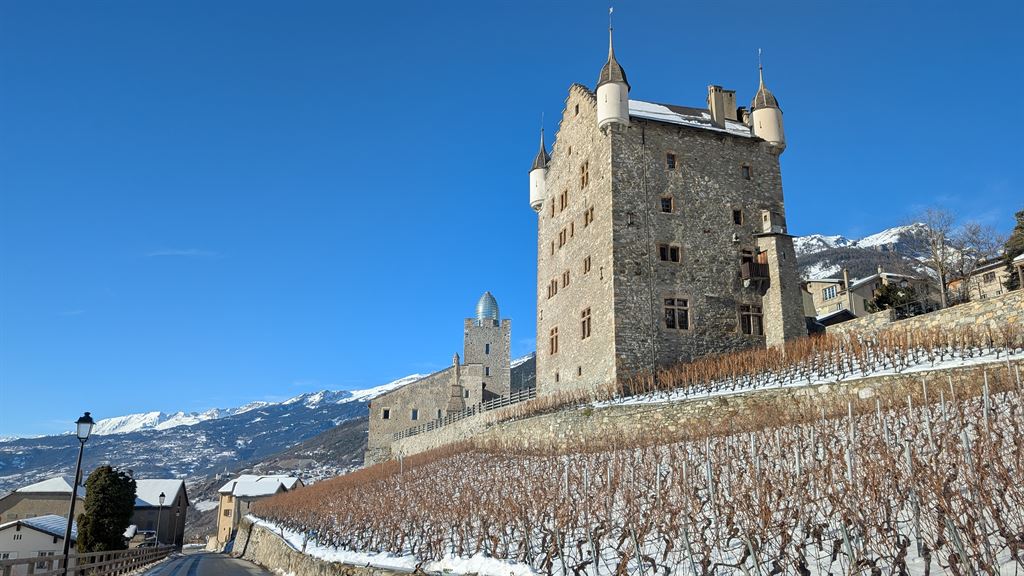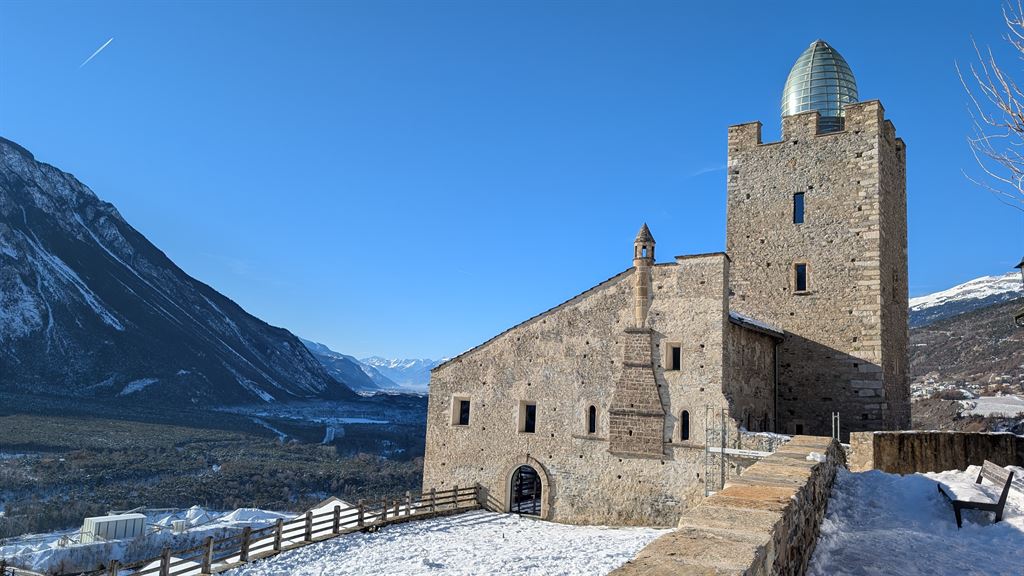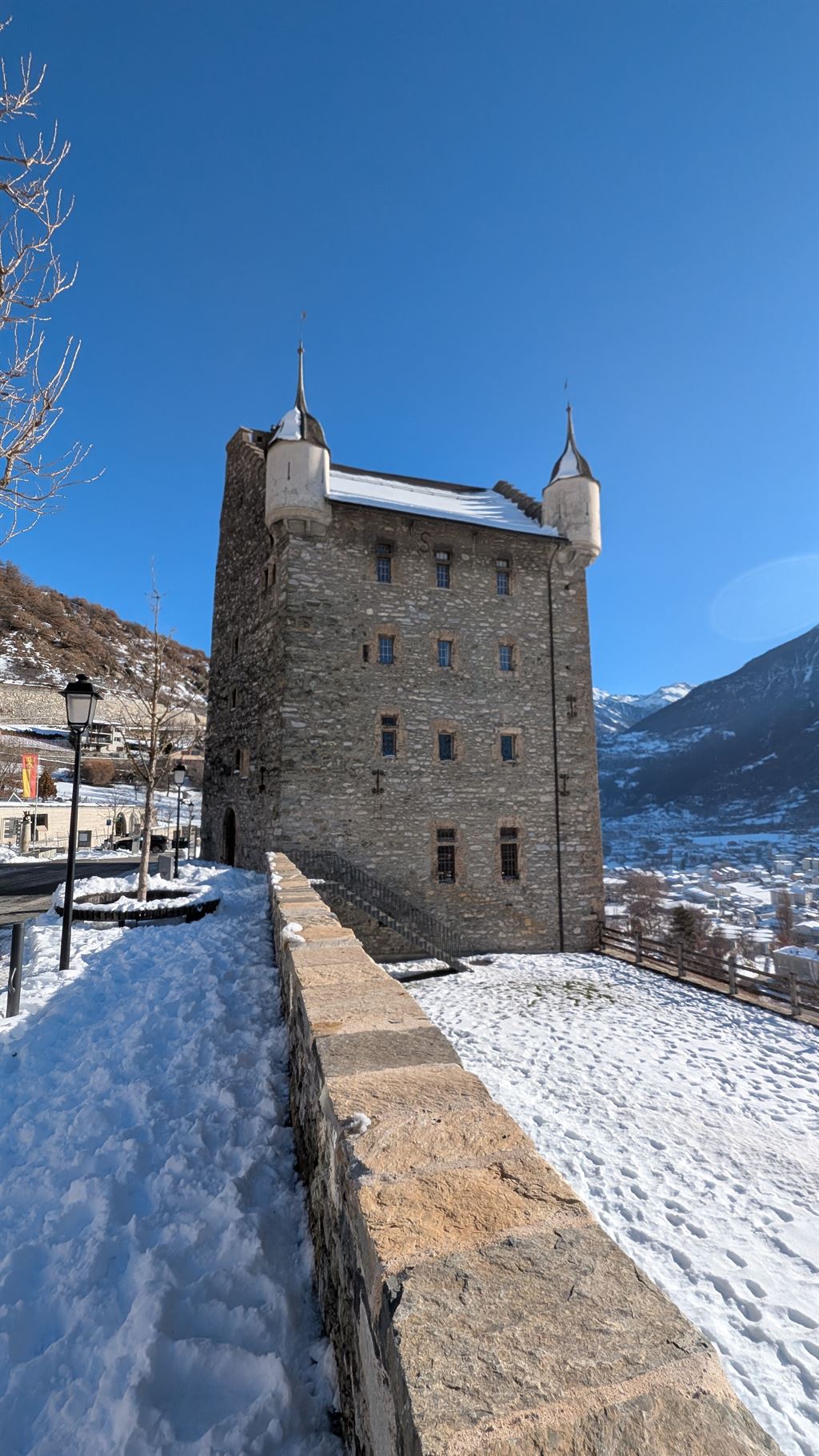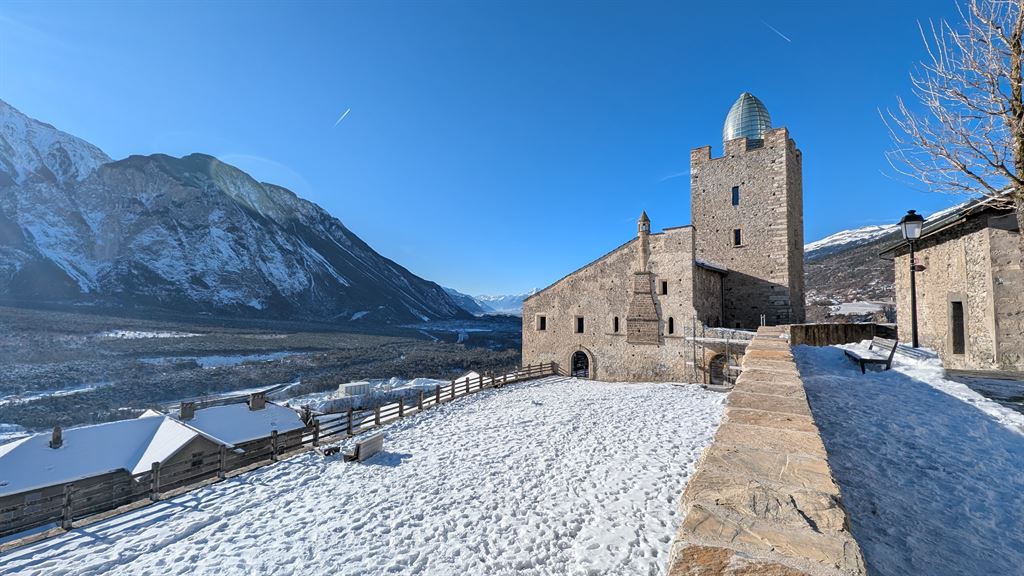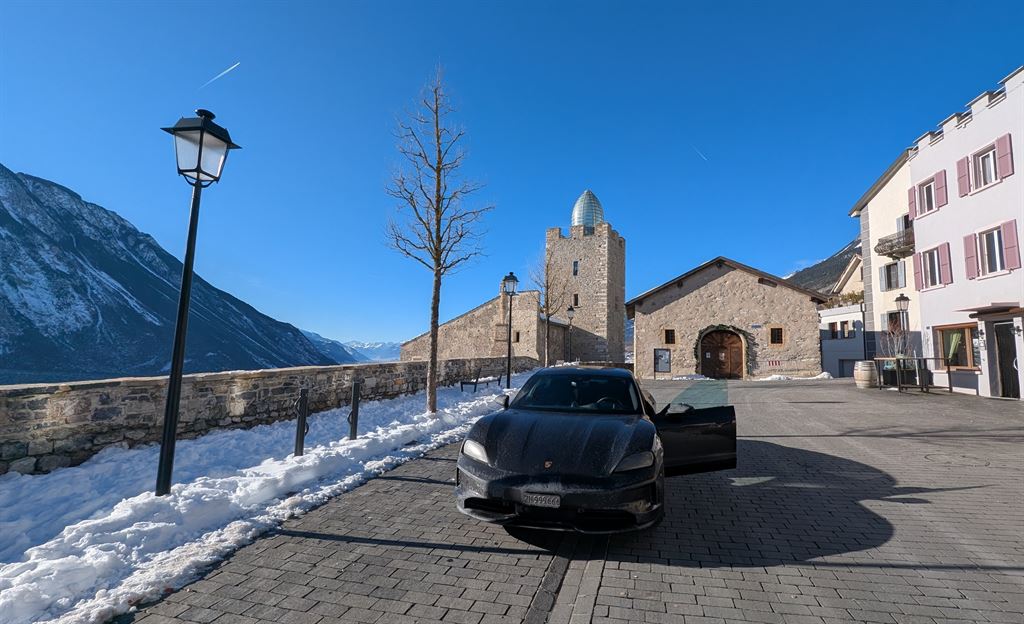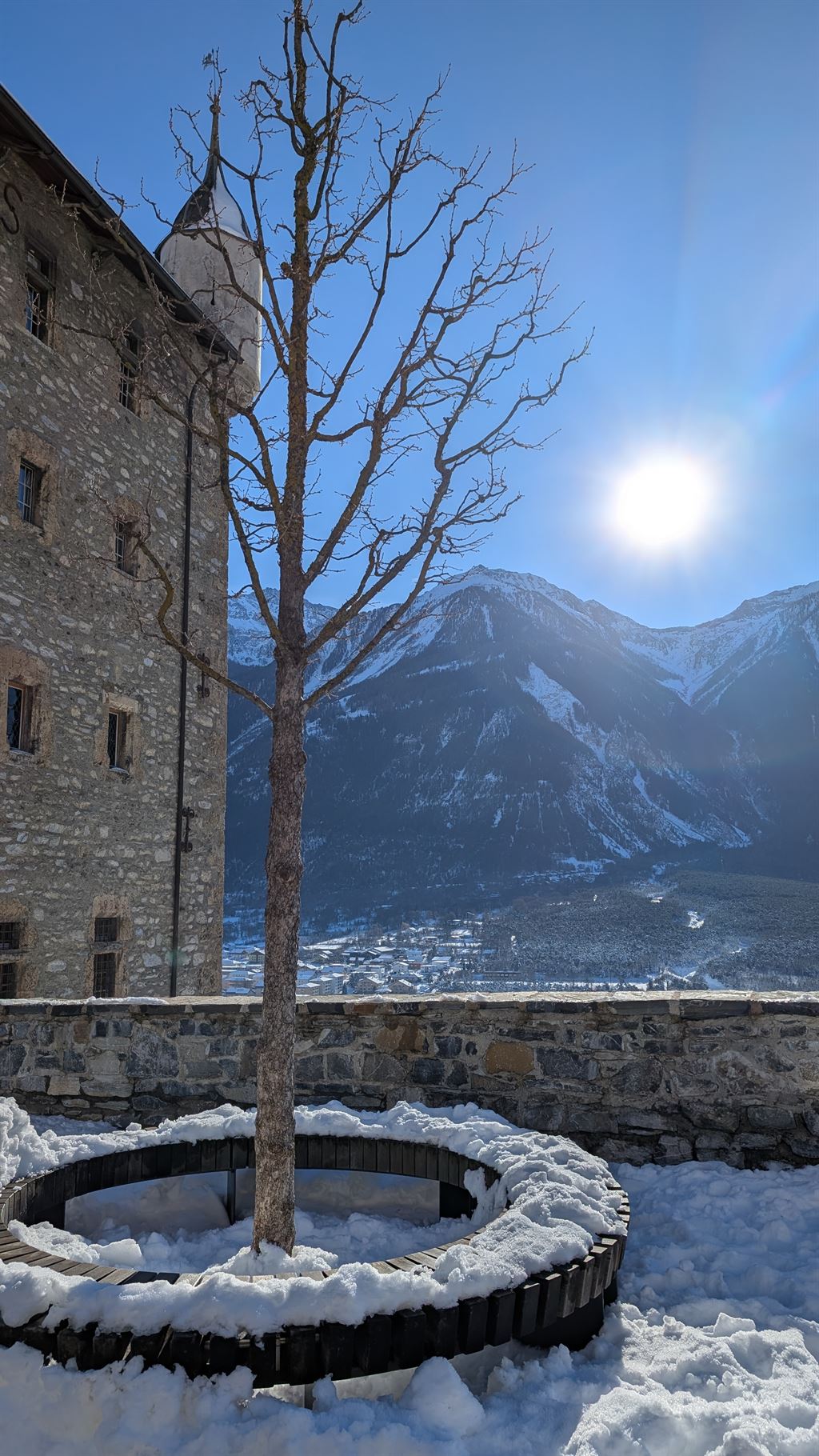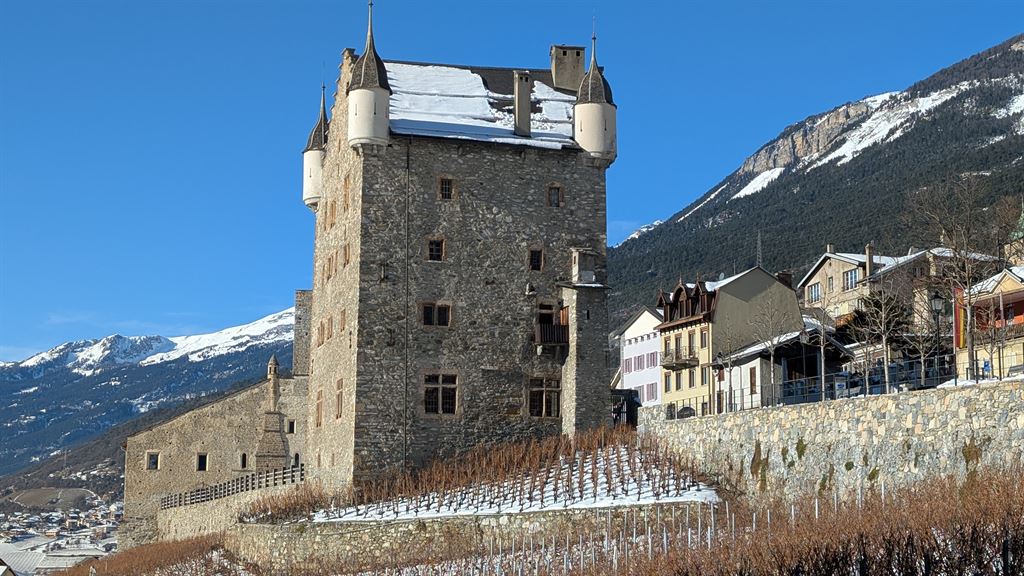Leuk Castle, a fascinating testimony to history, probably has its origins in an early Romanesque tower built between the 11th and 13th centuries. This tower was originally connected to a dwelling and a ring wall. The first documented mention of the Meierwohnung dates back to 1254, which indicates an important role in the regional administration.
Destruction and Reconstruction
In 1415, the castle and the town hall were destroyed by a devastating fire. In the years that followed, the building underwent numerous reconstructions and extensions. Particularly noteworthy is the period under Bishop Supersaxo, who restored the tower in 1475 and converted the castle into the bishops' summer residence. These reconstructions helped to establish the castle in its current form.
Political significance
Leuk Castle played a central role in the political history of the region. In April 1507, the peace treaty between Valais and Savoy was signed here, an important event in the history of both regions. The Bishop of Sion, later Cardinal Matthäus Schiner, and the Duke of Savoy were the signatories of this important document. In addition, the Valais district council held regular meetings in the castle, which further cemented its importance as a political center.
Dark Chapters
In 1627, the sensational trial against the knight Anton Stockalper took place in the Bishop's Castle. Stockalper was tortured here and finally executed in front of the castle. The witch trials of the 17th century also left their mark on the castle. In 1867, Pastor Peter Kämpfen documented the case of the witch Katharina Balin, who was executed in 1678, which underlines the dark history of the place.
Architectural features
Despite the numerous renovations, some of the castle's original elements have been preserved to this day. The round-arched Romanesque windows are an impressive example of this. One of the windows on the south side is decorated with small columns, which give the building a special charm. In the eastern residential wing there is a large fireplace with a chimney that protrudes from the outer wall.
To the west, the castle is protected by courtyard walls with battlements and loopholes that secure the entrance to the city and form a bastion. These architectural elements testify to the castle's military function in earlier times.
Current meaning
The Bishop's Castle has been owned by the municipality since 1934 and is a listed building. It is not only an important part of Leuk's cultural heritage, but also a place that allows visitors to immerse themselves in the region's rich history.
Leuk Castle remains a fascinating destination for history buffs and offers a unique insight into the past of the Valais region.
The Beggar Girl
Once upon a time there lived a castle governor who had a deep wish: his son, a young count, should get married in order to keep the castle governorship in the family. The father invited everyone to a big banquet and announced that his son's wedding was imminent. The son, who valued his independence, replied that he was quite willing to get married, but that he wanted to make the choice himself, regardless of whether the bride was rich or poor - the main thing was that he liked her.
On a walk, the young count spotted a girl washing clothes at the well and was immediately taken with her. Back at the castle, he had a magnificent dress made to fit the girl, whose size he had noted in his mind. With the finished dress, he returned to the village, sought out the girl and her mother, and asked for her hand in marriage.
The mother was skeptical: "You are a count and we are poor. This is surely just a joke." But the young man emphasized the seriousness of his request. The girl agreed on the condition that she obey her future husband in everything. The wedding took place and the simple girl quickly adapted to the noble life.
After two years, the young countess gave birth to a daughter. But the count, influenced by the voices of the people, asked her to give the child away because it did not meet expectations. With a heavy heart, the mother obeyed. Two years later, a son was born, but the count took him away from her for the same reasons. Both children were given to relatives, without the mother knowing where.
The greatest test, however, came when the count finally demanded that his wife leave the castle so that he could enter into a marriage befitting her status. Obediently, she took off her fine clothes, put on her old peasant clothes and returned to her parents' house, comforted only by the words of her mother.
Two years later, the count had her brought back - not as his wife, but as a servant. She was to prepare the castle for his new wedding. On the day of the celebrations, she was asked to wait alone. Next to the count sat a young woman whom he presented as his bride.
When he asked his former wife what she thought of the bride, she replied calmly: "I like her very much. I hope you will always like her and never be treated as harshly as I was."
Moved by her words, the count revealed the truth: the supposed bride was her daughter, the young man next to her was her son. With this revelation, the count asked for forgiveness and took his wife back to his side.
The family reunited, and the castle became a place of happiness and fidelity. The count kept his promise until death separated them. The story shows that love, forgiveness and perseverance can overcome even the toughest trials.
Access
The castle is freely accessible.


